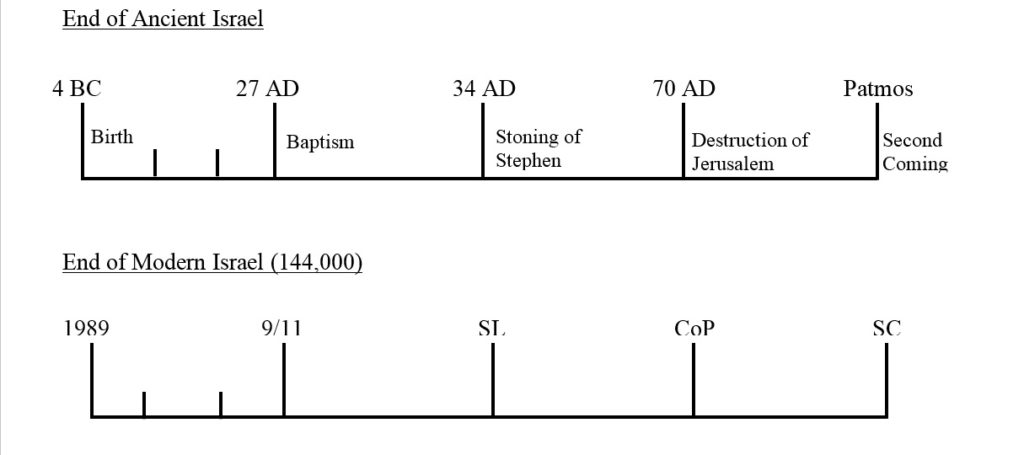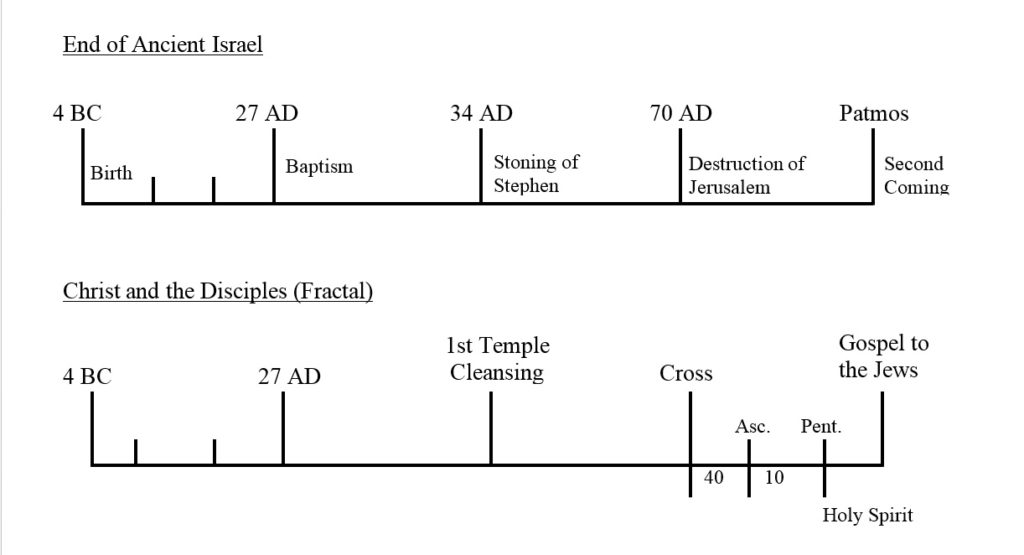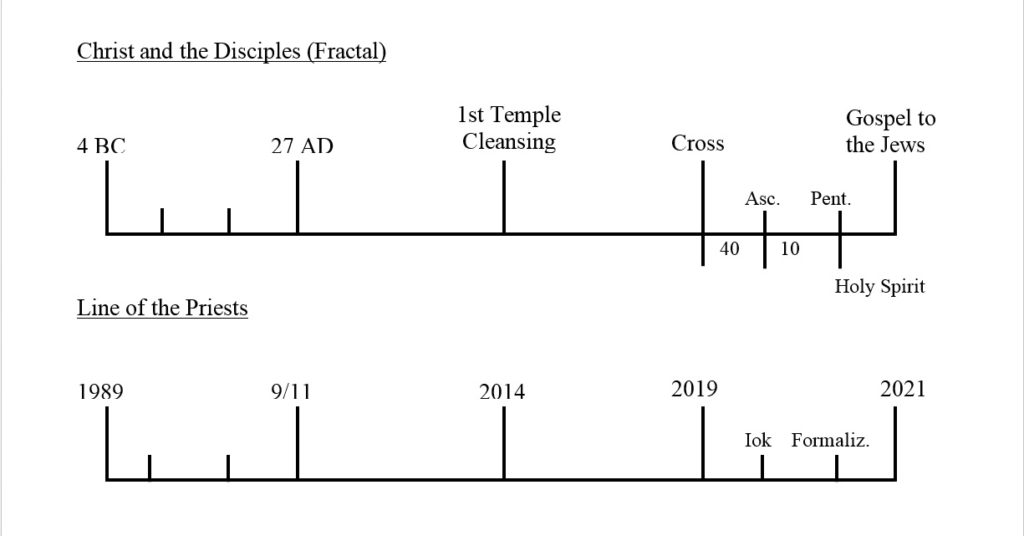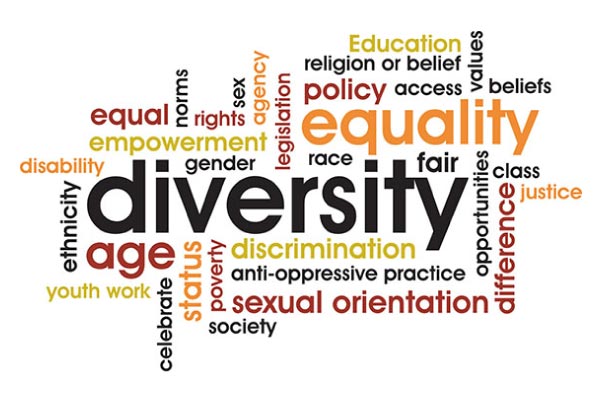Introduction
The subjects of race and gender equality are present truth. This light was at the centre of the most severe shaking the movement has suffered to date. A shaking which saw the departure of the founding ministry and the messenger of the first angel. All can be grateful for having made it this far in the process of shakings and siftings through which God is establishing His church. However there is a danger of becoming comfortable with the thought that the shaking has passed, the subject of equality has been understood, and new developments can be looked forward to in the present and near future. The evidence from God’s Word is that this subject has not been understood. Further to this, the evidence on the ground is that some are yet to fully embrace it. Such are in danger of making shipwreck of their faith if a thorough reformation is not enacted.
The history of Christ and His disciples has been an important point of reference for understanding the history of the priesthood of this movement. This history will be considered here for lessons on the movement’s present position with regards to equality, and the work that needs to be done to successfully navigate through the tests of this dispensation.
Conceptual Groundwork
The line of the end of ancient Israel covers close to 100 years of history from the birth of John in 4 BC to Christ’s “second coming” at Patmos to deliver the prophecies of Revelation to John. This line typifies the end of modern Israel (the line of the 144,000) which began in 1989 and continues through to the close of probation and the second coming.

This 100 year history can be divided into sections. And when these sections are examined they will be found to present a pattern of events similar to that seen within the parent line from which they have been derived. These smaller sections which repeat the pattern seen in the larger line are fractals. An example of a fractal that can be derived from the end of Ancient Israel is that which covers the history of Christ and His disciples from the birth of John in 4 BC to the outpouring of the Holy Spirit at Pentecost and the carrying of the Gospel to the Jews thereafter. This fractal of the end of ancient Israel presents a model for the history of the priests. When these two lines are paralleled with one another they appear as follows:


The birth of John typifies the time of the end in 1989. The empowerment of His ministry at His baptism typifies the empowerment of the first angel in the history of the priests at 9/11. At the first temple cleansing Christ manifested His power to drive the money changers out of the temple.[1] Two classes were seen – the Pharisees and robbers on one side and the poor worshippers on the other. And there was a separation of these two classes as the Pharisees and traders flee the manifestation of Christ’s power. These events typify 2014 where the manifestation of God’s power in the opening up new light led to a separation of two classes within the movement. The cross typifies 2019 and the Gospel to the Jews typifies 2021. Just before the cross Christ had His triumphal entry into Jerusalem. Ellen White draws parallels between the Triumphal entry and the Midnight Cry of Millerite history.[2] The Midnight Cry in the history of the priests began to be proclaimed in October 2018. Immediately following His triumphal entry Christ cleansed the temple for the second time. This second temple cleansing typifies the shaking and separation that took place in October 2019 where Future for America left the movement.
Following the cross there were fifty days until Pentecost. Christ personally taught His disciples in the forty days after His crucifixion and ascended to Heaven when these forty days had elapsed. The disciples spent the remaining ten days in preparation for the outpouring of the Holy Spirit that came upon them at Pentecost. The forty days illustrate the period of increasing knowledge that the priests have been going through since November 9th, 2019. Pentecost would therefore mark the formalization of the message the priests are to understand and proclaim in this dispensation. As of this writing the formalization of the message is yet future.
Having laid out the fractal of the end of ancient Israel and how it parallels the line of the priests, specific lessons regarding the movement’s current position can now be drawn.
The Nature of the Kingdom
Before the time of the end in the line of Christ and His disciples the Pharisees developed an understanding of the nature of the kingdom that would be established by the Messiah. They believed Christ would come as a worldly king who would militarily eject their Roman occupiers and restore them to a position of preeminence among the nations of the world. They gravely misinterpreted the scriptures about the Messiah’s work to suit their own worldly ambitions.
Hatred of the Romans, and national and spiritual pride, led the Jews still to adhere rigorously to their forms of worship. The priests tried to maintain a reputation for sanctity by scrupulous attention to the ceremonies of religion. The people, in their darkness and oppression, and the rulers, thirsting for power, longed for the coming of One who would vanquish their enemies and restore the kingdom to Israel. They had studied the prophecies, but without spiritual insight. Thus they overlooked those scriptures that point to the humiliation of Christ’s first advent, and misapplied those that speak of the glory of His second coming. Pride obscured their vision. They interpreted prophecy in accordance with their selfish desires. DA 30.2
This was the state of affairs that Christ was born into. These corrupting ideas took hold and did their work in the years of darkness that preceded His advent. When the time came for Him to enter upon His labours these beliefs formed an entrenched orthodoxy that even the Son of God would struggle to penetrate.
The disciples, being Jews, were not immune to the popular interpretations set forth by the religious teachers. They to a large extent saw matters as the Pharisees did. And further to this, the reformer raised up to herald the coming of the Messiah believed and taught these popular errors as well. It was Christ’s work to extricate them from these false understandings and correct them with regards to the nature of His kingdom. This He did through His parables which taught that His kingdom was a spiritual one. But that His efforts were a failure is demonstrated at the cross. Christ’s teaching about the spiritual nature of His kingdom, and that He would suffer and die in the process of establishing it was lost to His disciples. Their disappointment at the cross was as complete and crushing as if they had received no prior warning.[3]
Had the disciples not been blinded by the false interpretations of the Pharisees, and had they not been so slow to understand Christ’s teaching they could have avoided the bitter disappointment. They could have met the crisis with courage and fortitude rather than despair. A testimony of the intransigence of deep rooted and long-cherished beliefs is seen in the fact that even after the cross the disciples inquired of the risen Jesus as to whether He would then establish an earthly kingdom.
When Jesus opened the understanding of the disciples to the meaning of the prophecies concerning himself, he assured them that all power was given him in Heaven and on earth, and bade them go preach the gospel to every creature. The disciples, with a sudden revival of their old hope that Jesus would take his place upon the throne of David at Jerusalem, inquired, “Wilt thou at this time restore again the kingdom to Israel?” The Saviour threw an uncertainty over their minds in regard to the subject by replying that it was not for them “to know the times or the seasons, which the Father hath put in his own power.” 3SP 263.3
The disciples began to hope that the wonderful descent of the Holy Ghost would influence the Jewish people to accept Jesus. The Saviour forbore to farther explain, for he knew that when the Holy Spirit should come upon them in full measure their minds would be illuminated and they would fully understand the work before them, and take it up just where he had left it. 3SP 264.1
Under this heavenly illumination, the scriptures which Christ had explained to them, stood forth in their minds with the vivid luster and loveliness of clear and powerful truth. The vail which had prevented them from seeing the end of that which was abolished was now removed, and the object of Christ’s mission and the nature of his kingdom were comprehended with perfect clearness. 3SP 266.1
What the disciples failed to comprehend during the years of Christ’s ministry they were brought to understand at Pentecost.[4] When the Spirit opened their understanding of the parables which taught the nature of Christ’s kingdom, and when they were in oneness of heart between themselves, they were then ready to preach the gospel with power.
This history has important lessons for the priests today. The priests are typified by the disciples. As the disciples received a wrong understanding of the nature of the kingdom to be established in their time, it follows that the priests in like manner have misunderstood the nature of the kingdom in their history. The Pharisees represent the religious establishment. As the false teachings of the Pharisees can be traced back to the years of darkness before the birth of John, the false teachings that lead the priests to misunderstand the nature of the kingdom can be traced back to the history preceding 1989.
What is seen in the years preceding 1989? There is the Moral Majority and its work of politicizing the evangelical churches and mobilizing them towards the election of conservative politicians. The leaders of the Moral Majority held to a conservative Christianity which opposed the civil rights movement and racial integration. It presented a patriarchal worldview which saw the feminist movement as evil and opposed its efforts to elevate the status of women. They also virulently opposed the gay rights movement which sought to obtain civil rights and legal protections for the homosexuals. In summary their movement was racist, sexist, and homophobic.
Interwoven within the worldview of the moral majority was the belief in American Exceptionalism. This is the idea that America is in a special sense led by God and that it has been ordained to rule the world. It is true that God raised up America and He raised it up to hold a position of preeminence within the theatre of nations. His purpose was that America would be “a light on a hill” – a shining example to the world of divine principles.[5] But evangelicals, like the Jews in Christ’s day, have perverted this truth and used it to promote a toxic nationalism – a discriminatory and conceited exclusivity.
The conservative Christian worldview delineated above is also significant because Seventh Day Adventists have been influenced by it. Throughout the history of darkness from 1863 to 1989 the Adventist Church has imbibed the influence and theology of the protestant churches. Today very many Adventists can be found who reflect conservative Christian attitudes towards race, gender, and homosexuality. And many can be found who sympathize with, if not openly express, their support for Donald Trump – the archetypal Christian nationalist.[6]
The priests of this movement are Seventh Day Adventists. As the false teachings of the Pharisees affected the disciples, the priests within the movement have been influenced by this conservative Christian worldview. Prior to the Midnight Cry various nationalisms were openly expressed without the faintest regard for the thought that they were wrong. There was a strong, conservative American nationalism at what was then the heart of the work. Sexism as expressed through a patriarchal reading of the Bible also formed part of the movement’s orthodoxy. As John the Baptist was involved in the propagation of the errors of his day, the movement’s own reformer – the messenger of the first angel – taught the errors of the Adventist church, which are the errors of the evangelical churches and of the Moral Majority.
Christ taught parables in an effort to extricate His disciples from their false understandings. He gave one of his most striking and explicit lessons regarding the nature of His kingdom at the last supper when He washed His disciples’ feet. Through this He communicated the principle of servant leadership which was contrary to the character of the earthly kingdoms the like of which they hoped He would establish. Parallel to this, the Midnight Cry message communicated the principles of the nature of the kingdom in the history of the priests. Just prior to November 9th, 2019 (the cross) the Midnight Cry opened up the principle of equality as present truth. The emphasis of these messages were equality as it pertained to race and gender. Equality in matters of race does away with nationalist sentiments and calls God’s people to view and value each person as an individual without any weight given to racial, national, or tribal considerations. Equality as it pertains to gender does away with patriarchy and calls for men to view women as standing on a full equality with themselves. Race and gender equality represent two of the three areas in which evangelicals have failed and are failing; and in which many in this movement are failing also.
We Do Not Understand Equality
It is one thing for the disciples not to have understood the nature of Christ’s kingdom through the duration of His active ministry. But they did not understand it even after the cross. Christ arose and began to re-teach them the things He taught them in previous years. But it was not until Pentecost that the nature of Christ’s kingdom and the work they were to do was fully understood. All this typifies the position of the priests today.
If the disciples did not understand the nature of Christ’s kingdom notwithstanding Christ’s teaching prior to the cross, it follows that even after November 2019, the priests do not understand the principle of equality as God would have them. If the lines are allowed to speak for themselves then this conclusion is unavoidable. Beyond the testimony of the lines, this fact can be seen within the movement by simple observation. However, more troubling than a mere failure to understand, there is evidence that this truth has not been received and is merely being paid lip service in some quarters. Nationalistic, racial, and tribal sentiments have not been completely abandoned. Some still give expression to preference in these matters. There has not been a thorough and zealous reformation by some in their attitudes and behaviour towards women. This reformation in behaviour is not only speaking to the attitudes of individuals. It extends to the operations of local and national ministries, and churches. The evidence that equality has not fully been embraced within these structures is manifested in lukewarm efforts to actually implement it. Practically speaking, if women are still being relegated to the kitchens and if men are not sharing equally in this work it demonstrates that equality has not been embraced. If patriarchal cultural practices of women serving men continue to be tolerated then equality has not been embraced. If women are still being overridden and spoken over in business meetings, and if they are being tokenized in their appointments to boards and are not being taken seriously, then equality has not truly been embraced. If there is an intellectual assent to equality but it is business as usual on the ground then surely the principle has not been embraced.
If equality has not been embraced it follows that the Midnight Message was not truly embraced. And if the Midnight Cry has not been embraced then such a preparing to fail the tests of this dispensation and leave the movement.
What Must We Do?
Following His resurrection Christ repeated the prophecies that the disciples should already have been familiar with. This work was just as essential as that which was done in the upper room which prepared the disciples for Pentecost. Today messages are being presented by the movement’s leaders that are clarifying and refining that which was brought to light under the Midnight Cry. Understanding and receiving these messages is vital preparation for the clarification of the principle of equality that will come in parallel to the outpouring of the Spirit at Pentecost.
The work to be done at the individual level also involves self-reflection on one’s honesty with the subject of equality. The light has been presented. Has it been understood and accepted? And have the old patriarchal beliefs and feelings been renounced? It would be a rare occurrence to find someone openly opposing equality now given the strength of the evidence for it. But this truth can be shut out from the heart without any open opposition being expressed. And here lies the danger that calls for thorough introspection. The extent to which equality has been embraced will be manifested more fully in the course of time as new phases of light are unsealed in this dispensation. Every new phase of light reveals whether that which preceded it had truly been received.[7] But now is the time to resolve any internal contradictions between the message and oneself as experience has demonstrated that it is difficult, if not nearly impossible, to turn oneself around when the rejection of new light is preceded by the rejection of former messages upon which that new light is based.
There
is also a work of restitution that needs to take place. Restitution means
giving to the women in the movement that which a patriarchal order had taken
from them. This includes opportunities to lead and opportunities to hold
offices of leadership that were previously reserved for men. It involves
training them both as teachers and leaders, and giving them space to learn and
become experienced. It involves giving weight to their voices whether it be in
the home, in the fellowship, in the business meeting, or in the pulpit. This work
must continue until the women in the movement stand on an equality with their
male counterparts in every meaningful way.
[1] DA 158.1-2, 162.3
[2] GC 402.2
[3] GC 594.1
[4] Christ taught the nature of His kingdom through His parables. 8T 276 says the disciples understood the parables when the Spirit was poured upon them at Pentecost.
[5] The Lord has done more for the United States than for any other country upon which the sun shines. Here He provided an asylum for His people, where they could worship Him according to the dictates of conscience. Here Christianity has progressed in its purity. The life-giving doctrine of the one Mediator between God and man has been freely taught. God designed that this country should ever remain free for all people to worship Him in accordance with the dictates of conscience. He designed that its civil institutions, in their expansive productions, should represent the freedom of gospel privileges. 21LtMs, Ms 17, 1906, par. 1
[6] For an elaboration of the relationship between Trump and Christian nationalists read the following article – “Why Christian Nationalists Think Trump is Heaven-Sent,” <https://www.washingtonpost.com/outlook/why-christian-nationalists-think-trump-is-heaven-sent/2020/03/20/a3c42734-5983-11ea-9b35-def5a027d470_story.html>
[7] This principle is set forth in EW 259-260

